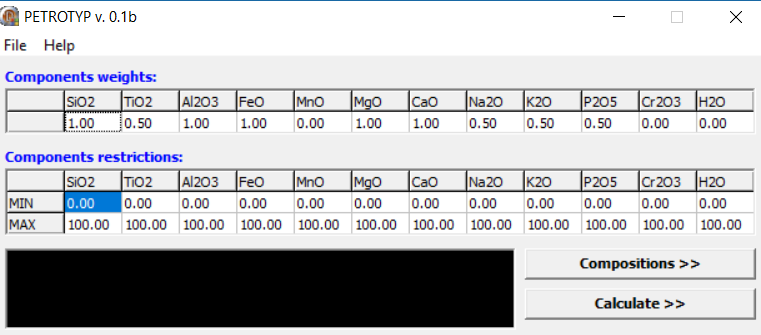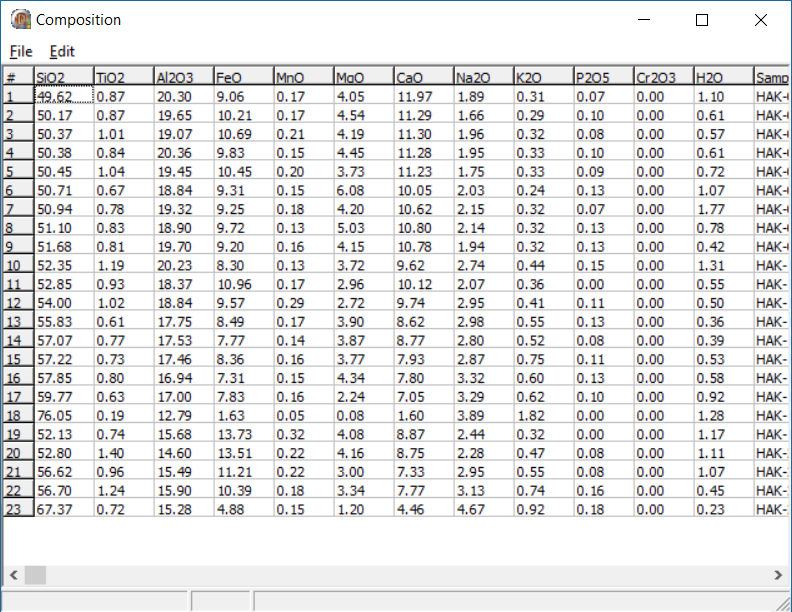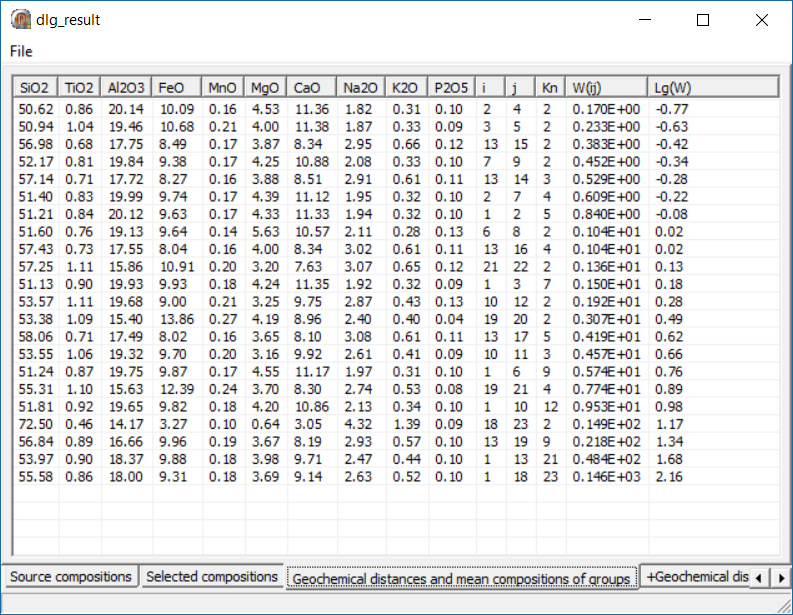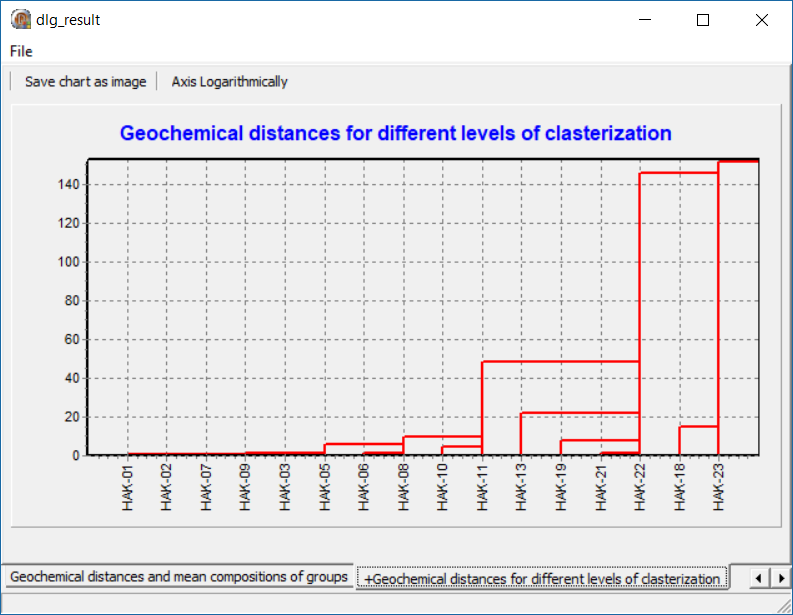PETROTYP
PETROTYP has been designed for clustering igneous rock compositions given as concentrations of major element oxides. This program is based on principles of hierarchical grouping of objects that are characterized by an array of parameters described as an objective function (Ward, 1963).
PETROTYP
PETROTYP has been designed for clustering igneous rock compositions given as concentrations of major element oxides. This program is based on principles of hierarchical grouping of objects that are characterized by an array of parameters described as an objective function (Ward, 1963). The major principle involves a subsequent combining of samples having the minimum geochemical distance (GD) with respect to other rocks or average cluster compositions formed at a previous stage. The GD-value is thereby calculated in the Euclidian metric as the square root of the sum of squared differences between the concentrations of elements in question normalized to their dispersions in the group (cluster). Such a normalization is required to make the use of the concentrations of major elements (which can differ by as much as one order of magnitude) roughly equal and, thus, to make the contributions of various elements in the GD roughly comparable.
The PETROTYP program operates with up to 12 oxides (SiO2, TiO2, Al2O3, FeO, MnO, MgO, CaO, Na2O, K2O, P2O5, Cr2O3, H2O) allowing one to combine any set of n samples into a single group during n–1 clustering steps. Average weighted compositions of the petrochemical clusters are available for further processing and genetic interpretations.
Download
Compatibility
- Tested on Windows XP, Windows 7 and Windows 10 operation systems.
References
- J. H. Ward, Jr., "Hierarchical Grouping to Optimize an Objective Function," J. Amer. Stat. Assoc. 58 (301), 236–244 (1963).
- A. Yaroshevskii, S. V. Bolikhovskaya, and E. V. Koptev-Dvornikov, "Geochemical Structure of the Yoko-Dovyren Layered Dunite–Troctolite–Gabbro–Norite Massif, Northern Baikal Area", Geochemistry International, 2006, Vol. 44, No. 10, pp. 953–964.



